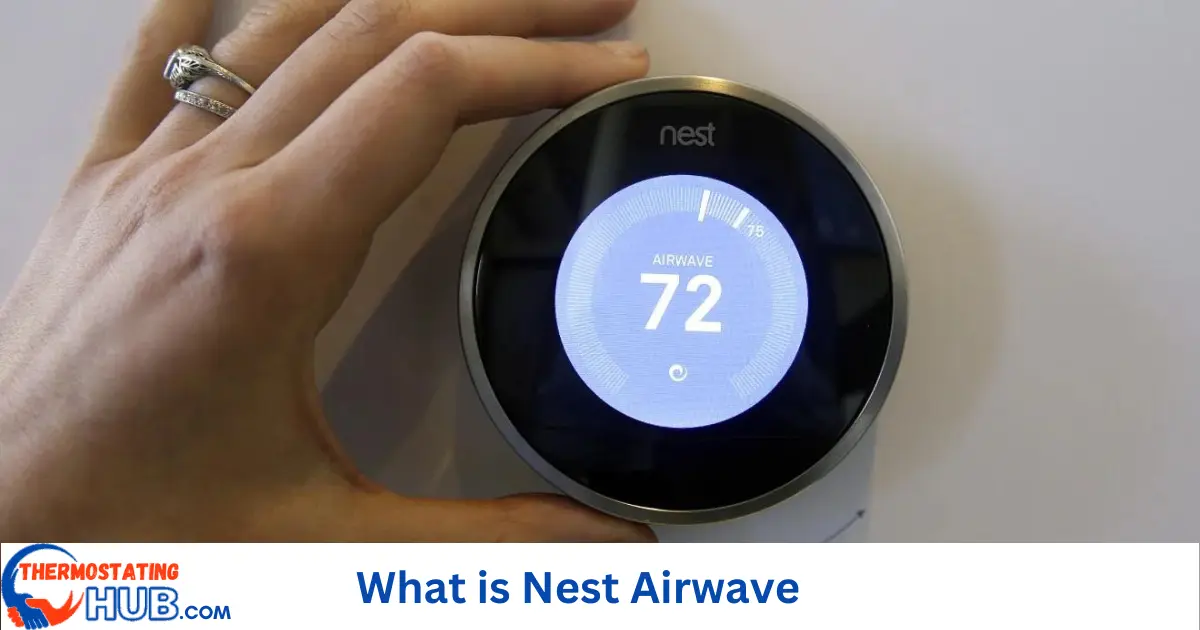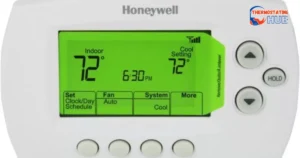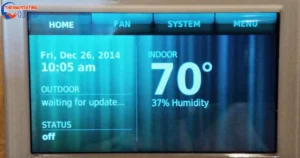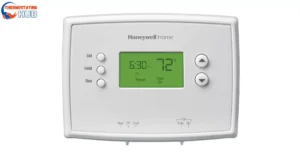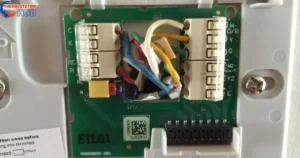Nest Airwave is like a smart helper for your home’s cooling system. It works by making small adjustments to save energy while keeping your place comfortable. It’s like a wizard that uses clever tricks to use less power without making you feel too hot or cold, making your home cozy and saving money.
Nest Airwave is like having a smart friend for your home’s temperature. Wondering, what is the nest airwave? A guide to understanding and using it. Well, it’s a clever tool that helps save energy without sacrificing comfort. It’s like a wizard that knows just the right tricks to keep your home cozy while also helping you save money on energy bills.
Nest Airwave is a smart feature that helps your home stay comfy while saving energy. It is simple, it adjusts your cooling system by optimizing when it runs, making sure your place stays pleasant while using less energy. Just set your temperature, and let Nest Airwave do the rest.
Nest Airwave, found in Nest thermostats, is a cool trick to save energy. It keeps your home comfy by circulating cool air, even after the AC stops. Instead of the AC working all the time, it uses the fan to push air through the vents, keeping your place cool with less energy.
How to turn Airwave On/Off

- Access the main menu on your Nest thermostat by pressing the ring.
- Go to “Settings.”
- Scroll down and select “Fan.”
- Choose “Airwave.”
- Turn Airwave off by selecting “Off.”
Nest Airwave is an innovative feature in Nest thermostats designed to enhance energy efficiency and reduce cooling costs. When you turn on Airwave, it uses the fan in your HVAC system to continue circulating cool air through your home after the compressor has turned off. This helps maintain a comfortable temperature without running the energy-intensive compressor constantly.
Airwave is especially effective in situations where there’s still cool air in the system, and it prevents unnecessary cycling of the compressor. The “Auto” setting is a smart choice because it allows your Nest thermostat to decide when to activate Airwave, ensuring optimal energy savings without sacrificing comfort. By understanding how to turn Airwave on or off, you can make the most of this energy-saving feature in your Nest thermostat.
You can activate Airwave using your home app, thermostat, or Nest app. To do it from your thermostat (only for Nest Learning Thermostat and Nest Thermostat E):
- Press the ring to show the Quick View menu.
- Go to Settings (look for the Nest settings icon).
- Choose Nest Sense.
- Click on Airwave.
- Choose Airwave on or Airwave off. When it’s on, you’ll see a checkmark (✔), and when it’s off, you’ll see a dash (–).
For turning Airwave on/off using the Home app:
- Hold your device’s tile.
- Tap Settings at the top right.
- Open Temperature Preferences.
- Click on Airwave.
- Toggle the switch to turn Airwave on or off.
And finally, to turn Airwave on/off using the Nest app:
- Tap Settings (find the Nest settings icon).
- Choose your thermostat.
- Tap Airwave.
- Switch the Airwave on or off by tapping the switch.
Read also: Nest Thermostat Not Blowing Cold Air [Easy Fixes]
How Airwave works in dry climates and other areas with low humidity
Airwave technology operates differently in dry climates and areas with low humidity compared to more humid environments. In such regions, the air contains very little moisture, which can affect the efficiency of Airwave systems.
In dry climates, Airwave devices may need to work harder to maintain optimal humidity levels inside a building. They often require additional water sources or may need to be equipped with larger water reservoirs to compensate for the rapid evaporation of moisture in the dry air. This ensures that the indoor air remains comfortable and healthy for occupants, as excessively dry air can lead to issues like dry skin and respiratory discomfort.
Moreover, Airwave systems in dry climates must be carefully calibrated to avoid over-humidifying the indoor environment. As too much moisture can create its own set of problems, such as mold growth and condensation issues. In summary, Airwave technology in dry climates and low-humidity areas requires specific adjustments and considerations to ensure optimal performance and comfort for building occupants.
Nest Airwave works best in places with low humidity like Arizona. It uses the cool air left in the ducts after the AC turns off to dry the air. This helps remove moisture, making the house feel nicer and improving the air. But in humid spots like North Carolina, it might not work well. It could make things more muggy indoors, so it’s better to turn it off there.
The role of outdoor humidity in the Nest Airwave setting
The Nest Airwave setting is designed to help save energy and improve comfort in your home. One important factor that influences how it works is outdoor humidity.
Outdoor humidity plays a crucial role in determining the effectiveness of Nest Airwave. When the humidity is low, the Airwave setting can work more efficiently. It helps by using the cooler outdoor air to reduce the need for your air conditioner to run continuously, saving you money on your energy bills. However, when the outdoor humidity is high, Airwave may not be as effective. As it relies on the outdoor air being cooler to provide cooling indoors.
In summary, understanding the role of outdoor humidity in the Nest Airwave setting can help you make the most of this energy-saving feature. Low outdoor humidity can enhance its effectiveness, while high humidity levels may limit its ability to save energy efficiently. By considering outdoor humidity, you can optimize your Nest thermostat’s settings for better comfort and energy savings.
The Nest thermostat considers the humidity outside before using Nest Airwave. It has a sensor that checks how humid it is outdoors. If it’s not very humid outside, the Nest thermostat will use Airwave to save energy and make the indoor air better. But if it’s very humid outside, it won’t use Airwave. Because that might make the inside of the house too humid.
Is Nest Airwave Worth Using?
Nest Airwave is a feature in Nest thermostats that can help save energy and reduce cooling costs. It works by using the cool air that lingers in your ducts after your air conditioner has turned off. Instead of immediately shutting off the AC when your desired temperature is reached, Nest Airwave lets it run a bit longer to distribute this already-cooled air, making your home comfortable without using extra energy.
Many users find Nest Airwave to be a valuable feature, as it can lead to significant energy savings without sacrificing comfort. However, its effectiveness depends on various factors like your home’s insulation, climate, and your cooling system’s efficiency. To determine if Nest Airwave is worth using for your specific situation, consider consulting with a professional HVAC technician or checking your energy bills to see if you notice any meaningful savings after using the feature.
Nest Airwave helps save energy and money by using leftover cool air from the AC to keep homes comfy without always turning on the AC compressor. It’s super helpful in dry places like Arizona, saving lots of energy. But, in humid areas, there’s a debate. Some say it might make homes more humid and less comfy.
There are concerns that in high humidity, Airwaves might not work as well, making homes uncomfortable and possibly using more energy. Also, using Airwave in humid places might make the AC system work harder, needing more fixes or even a replacement.
Deciding if Nest Airwave is good for your home depends on your climate and your AC system. Asking an AC expert can help figure it out. Regular check-ups for your AC system can keep it running well and save energy and money in the long run.
Using Nest Airwave in Humid Climates
Using Nest Airwave in humid climates can help you save energy and keep your home comfortable. Nest Airwave is a feature available in Nest thermostats that optimizes your cooling system’s performance. In humid conditions, this feature can be especially beneficial.
Nest Airwave works by running the fan for a short time after your air conditioner turns off. This helps remove excess moisture from the air, making your home feel cooler and less humid. By reducing humidity levels, your air conditioner doesn’t have to work as hard to maintain a comfortable temperature, which can lead to energy savings and lower cooling bills.
In humid climates, where high moisture levels can make the air feel warmer than it actually is, Nest Airwave can be a valuable tool to enhance your home’s comfort while also being energy efficient. By using this feature wisely, you can enjoy a more pleasant indoor environment and potentially reduce your energy consumption in the process.
Table
| Aspect | Description |
| Energy Savings | Reduces the need for constant AC operation, saving energy |
| Humidity Control | Removes excess moisture from the air, improving comfort |
| Cooling Efficiency | Optimizes cooling system performance for better efficiency |
| Cost Savings | This can lead to lower cooling bills and reduced energy costs |
| Comfort Improvement | Helps maintain a more pleasant indoor environment |
| Eco-Friendly | Reduced energy consumption contributes to a greener home |
Humidity really matters for Nest Airwave to work well. In places with lots of humidity, like when there’s a lot of moisture in the air, Nest Airwave might not save as much energy as it does in drier places. But even in humid spots, it can still help cut down on how much energy you use.
Deciding if Nest Airwave will be good in humid areas means thinking about both indoor and outdoor humidity. The Nest thermostat checks the temperature and humidity outside to decide if it should use Nest Airwave. When it’s super humid outside, Nest Airwave might not save a ton of energy, but it can keep your home feeling nice and comfy.
There are some things to watch out for if you’re using Nest Airwave in a humid place. If your home is already pretty humid inside, using Nest Airwave might make it feel even more muggy, which can be uncomfortable. Also, Nest Airwave might make the AC run less, which means less air moving around, and that could lead to mold growing in damp areas.
To make Nest Airwave work well in humid spots, keep an eye on how humid it is inside. If it’s already really humid indoors, maybe don’t use Nest Airwave. Also, make sure your AC system is in good shape and gets checked often to avoid mold and other problems from less air moving around.
Taking good care of your AC system can help Nest Airwave save energy and money even in humid places.
Read also: Nest Thermostat Blowing Cold Air on Heat [Fixed]
Pros and Cons of Nest Airwave
Pros:
- Energy efficient: Reduces energy consumption by optimizing cooling cycles.
- Cost-effective: Helps lower energy bills by utilizing smart temperature control.
- Comfortable living: Maintains a comfortable indoor environment while conserving energy.
Cons:
- Potential temperature variation: Might lead to slight temperature fluctuations.
- Limited compatibility: This may not integrate seamlessly with older HVAC systems.
- Humidity impact: This could affect humidity levels in certain climates.
Features: A Guide to Understanding and Utilizing its Functionality
It aims to offer a comprehensive understanding of their diverse functions, making it easier for users to optimize their usage. This guide delves into the specifics, enhancing users’ ability to utilize these features effectively.
Potential of Nest Airwave for Energy
Explores the innovative capabilities of Nest Airwave in optimizing energy usage and enhancing cooling efficiency. It delves into strategies harnessing this technology to promote sustainable energy practices and offers insights into its transformative impact on residential cooling systems.
Answer to the key question
How do you use Nest Air?
Adjust Nest air by setting desired temperatures.
Is Nest Airwave effective in reducing energy consumption and costs?
Nest Airwave aids in cutting energy expenses.
Are there any drawbacks to using Nest Airwave?
Potential drawbacks may include inconsistent temperature distribution.
How can I use Nest Airwave effectively in humid climates?
Optimize Nest Airwave by managing humidity settings.
Can I still use Nest Airwave if I have pets?
Yes, Nest Airwave functions regardless of pets.
Conclusion
In wrapping up our exploration of, what is nest airwave? A guide to understanding and using it, it’s clear that this smart technology offers a cool solution for energy savings at home. Learning about Nest Airwave helps us see how small changes can make a big difference in keeping our houses comfy while using less energy.
By using this clever tool effectively, we can save money on energy bills and help the environment by reducing our carbon footprint. Remember, setting your preferred temperature and letting Nest Airwave do its magic can bring comfort and savings.
Exploring and understanding this technology gives us the power to make smarter choices for a more eco-friendly and budget-conscious home. Embracing Nest Airwave means embracing a more efficient and comfortable way of cooling our homes while being mindful of our energy usage.
To sum it up, Nest Airwave is part of Nest thermostats that saves energy by keeping cool air moving in your home’s vents, even after the AC stops. It’s great for dry places like Arizona, lowering indoor humidity. This smart feature checks outside humidity before working, making it a clever way to manage home temperature and humidity while using less energy.

I’m Dariel Campbell, the HVAC maestro at thermostatinghub.com. I’m not just about fixing air conditioners; I’m your cooling confidant. As a problem-solving storyteller, I dive into the world of HVAC with a passion for unraveling dilemmas. Join me on a journey where your comfort is the plot twist we’re all waiting for!
